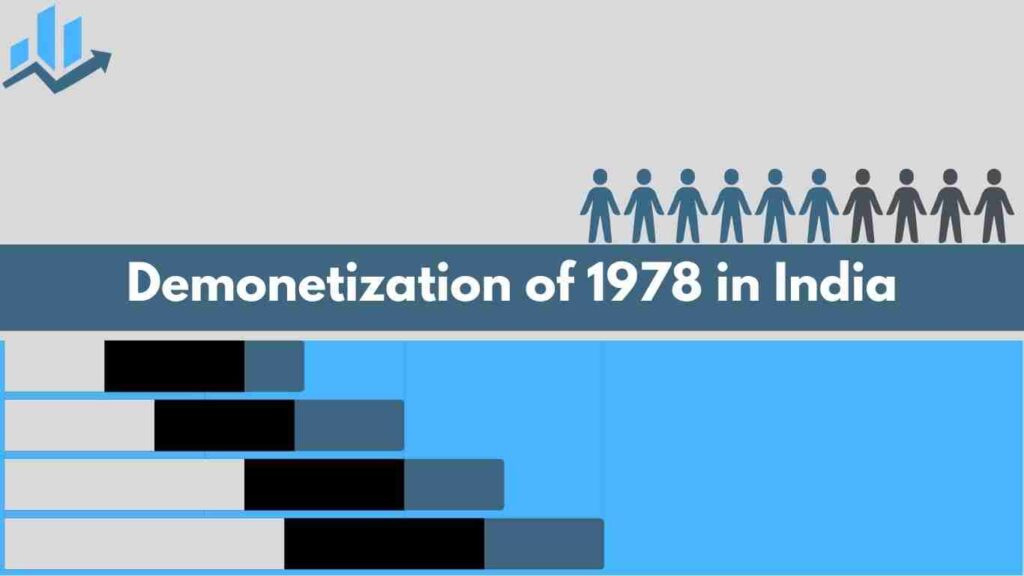
Demonetization is the act of stripping a currency unit of its status as legal tender, which means that it can no longer be used as a medium of exchange in transactions. In simpler terms, it is the process of ceasing the use of a certain currency denomination as a means of payment.
In recent years, demonetization has become associated with government policy, specifically the sudden withdrawal of existing currency from circulation and its replacement with new currency. This policy is typically implemented in an attempt to combat corruption, counterfeiting, and illegal activities that rely on the use of cash.
India has a long history of demonetization, with the first instance occurring in 1946. This post provides an overview of the demonetization of 1978 in India, its purpose, and its impact.
Table of Contents
Toggle1. The events leading up to the demonetization of 1978
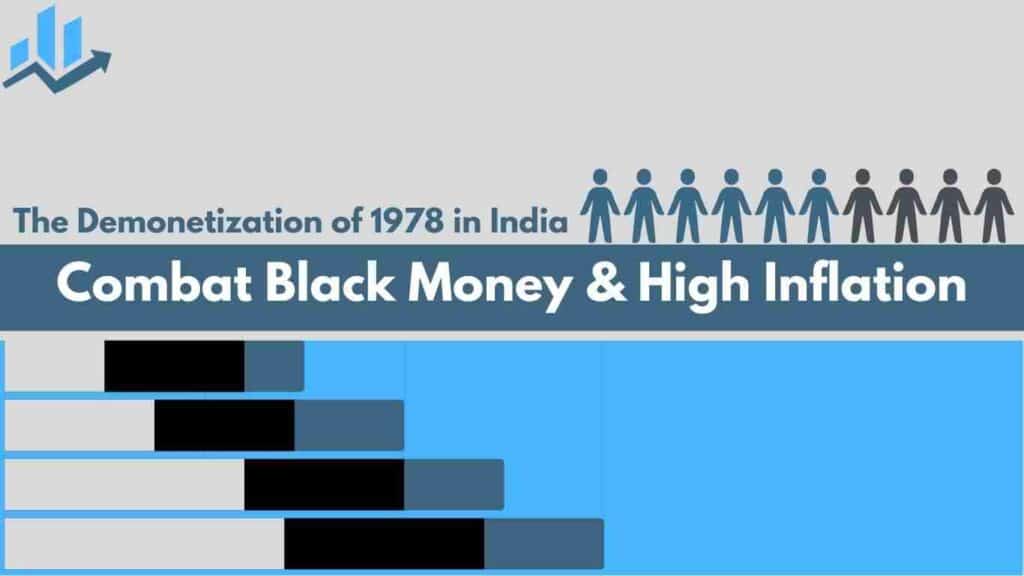
The demonetization of 1978 in India was a significant event in the country’s economic and political history. It was a response to various challenges faced by the Indian economy, including high inflation, the presence of black money, and counterfeit currency.
Before the demonetization of 1978, the Indian economy was in a state of crisis. Inflation was at an all-time high, reaching almost 23% in 1978. The government was also grappling with the issue of black money, which refers to income or wealth that is unaccounted for and not reported to the government for tax purposes. This led to a significant loss of tax revenue for the government and hindered efforts to improve the economy.
Moreover, counterfeit currency had become a significant problem in the country. According to reports, in the early 1970s, there were approximately 33 counterfeit notes per million notes in circulation, which increased to over 600 counterfeit notes per million notes by 1978. This led to a loss of public confidence in the currency, which was damaging to the economy.
Given these challenges, the government announced the demonetization of banknotes of denominations Rs. 1,000, Rs. 5,000, and Rs. 10,000. The move aimed to tackle the issue of black money and counterfeit currency by removing high-denomination notes from circulation. It was also intended to address the issue of inflation by reducing the money supply in the economy.
The demonetization process began on January 16, 1978, and citizens were given 90 days to exchange their high-denomination notes for lower denominations or deposits in banks. The process posed significant challenges for the banking sector, as banks had to manage the exchange of notes and ensure adequate cash supply for customers. The government provided support to banks during the process and introduced measures to reduce the burden on them.
The demonetization of 1978 had an immediate impact on the Indian economy, leading to a temporary liquidity crunch. The agricultural sector was particularly affected due to a lack of liquidity, while the manufacturing sector faced reduced demand. However, in the long run, the demonetization led to a reduction in inflation and an increase in tax revenues.
2. The impact of the demonetization on the economy
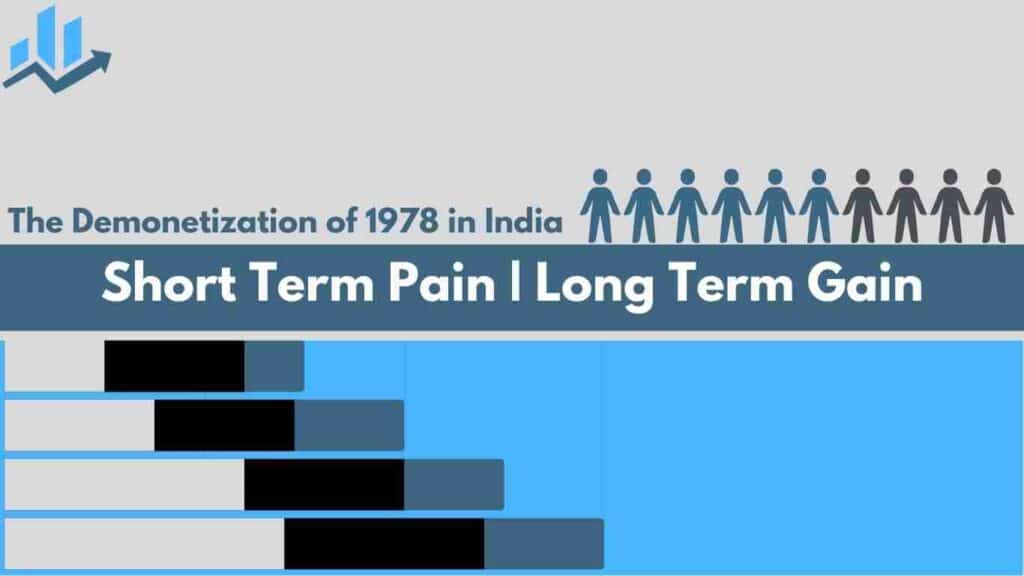
The demonetization of 1978 had both immediate and long-term impacts on the Indian economy. In the short term, the demonetization led to a temporary liquidity crunch as people rushed to exchange their high-denomination notes for lower denominations or deposits in banks. The agricultural sector was particularly affected due to a lack of liquidity, while the manufacturing sector faced reduced demand.
However, in the long run, the demonetization led to a reduction in inflation and an increase in tax revenues. By removing large denominations from circulation, the government was able to curb the circulation of black money and counterfeit currency. This led to a reduction in inflation, as the supply of money was reduced, and a corresponding increase in tax revenues as previously unreported income was brought into the formal economy.
3. The impact of the demonetization on the banking sector
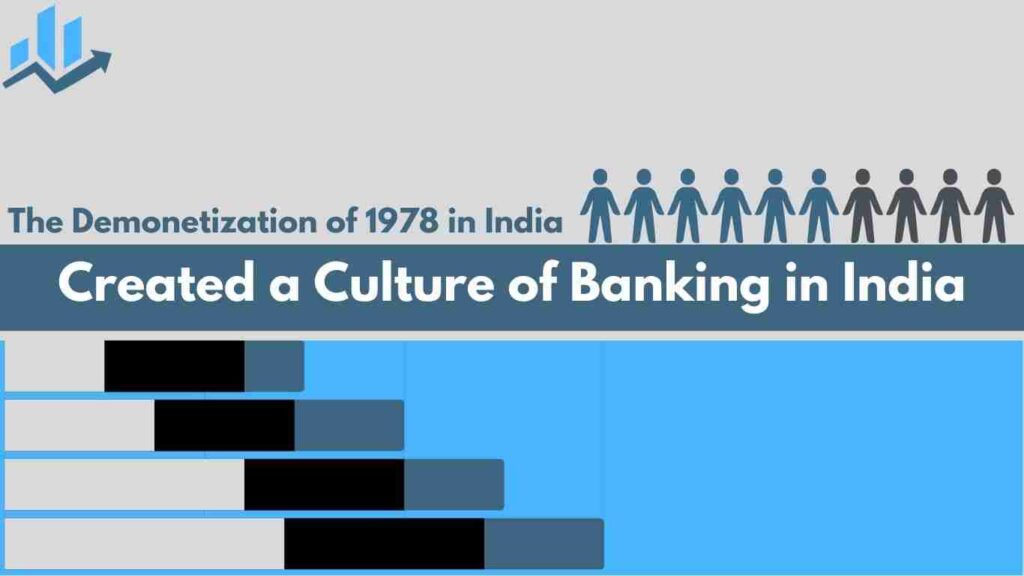
The demonetization of 1978 in India had a significant impact on the banking sector. Banks were at the forefront of the demonetization process, as they had to manage the exchange of notes and ensure adequate cash supply for their customers. Banks had to collect the demonetized notes and provide new currency notes or deposits to their customers in exchange.
The demonetization process posed significant challenges for banks. Banks had to ensure that there was sufficient cash supply to meet customer demand for new currency notes, which required careful management of the exchange process. The exchange process was further complicated by the fact that banks had to collect a large number of high-denomination notes from customers and transport them to the Reserve Bank of India (RBI) for disposal.
The government provided support to banks during the demonetization process. The RBI provided banks with additional currency notes to meet customer demand, and also introduced measures to reduce the burden on banks. For instance, banks were allowed to keep a portion of the demonetized notes as an asset, which they could use to manage their liquidity.
The demonetization also helped to create a culture of banking in India, with people who had never before used banks opening accounts to exchange their old notes. This led to a significant increase in the number of bank accounts and deposits in the country, which in turn helped to boost the banking sector and the overall economy.
4. The aftermath of the demonetization of 1978
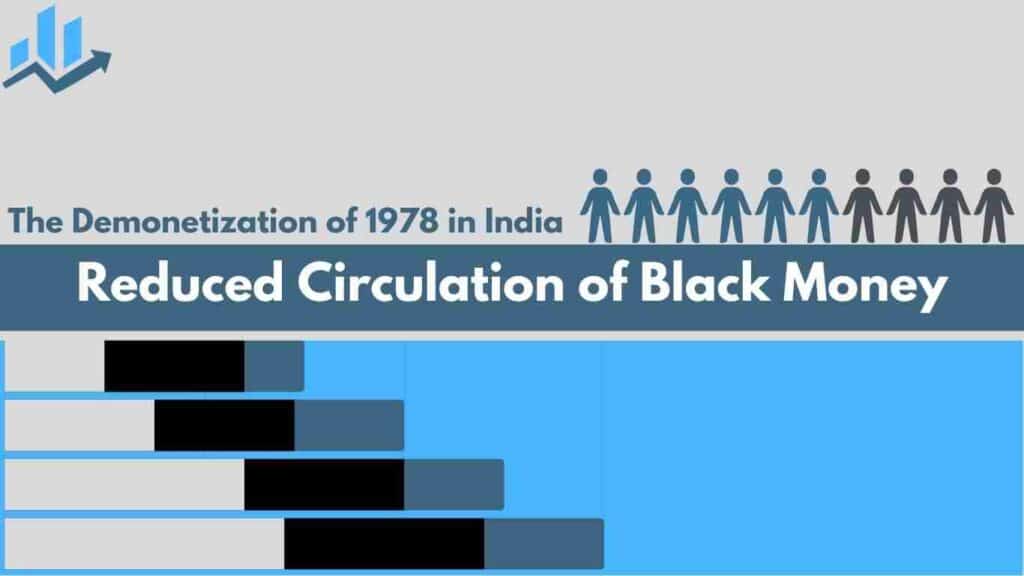
The demonetization of 1978 had a significant impact on the political landscape of India. The then-Prime Minister, Morarji Desai, received a lot of criticism for the move as it caused inconvenience to the public, especially those in rural areas who had limited access to banks. However, the move also gained support from those who believed it was necessary to tackle issues like black money and corruption.
In the long term, the demonetization of 1978 led to a reduction in inflation and an increase in tax revenues. It also influenced subsequent economic policy in India, with the government focusing on reducing the circulation of black money and counterfeit currency. The banking sector also underwent significant changes as a result of the demonetization, with the introduction of measures like Know Your Customer (KYC) norms and the establishment of the Financial Intelligence Unit (FIU) to combat money laundering and other financial crimes. Overall, the demonetization of 1978 played a crucial role in shaping India’s economic and political policy for years to come.
5. Conclusion
The demonetization of 1978 was a significant event in India’s economic and political history. While it had an immediate impact on the Indian economy and banking sector, it also led to long-term benefits such as reduced inflation and increased tax revenues. The demonetization of 1978 also played a crucial role in shaping India’s economic and political policy for years to come.
6. Questions & Answers:
What challenges did the Indian economy face before the demonetization of 1978?
- Before the demonetization of 1978, the Indian economy faced challenges such as high inflation, the presence of black money, and counterfeit currency.
How did the demonetization of 1978 impact the Indian economy in the short term?
- The demonetization of 1978 led to a temporary liquidity crunch as people rushed to exchange their high-denomination notes for lower denominations or deposits in banks. The agricultural sector was particularly affected due to a lack of liquidity, while the manufacturing sector faced reduced demand.
How did the demonetization of 1978 impact the Indian banking sector?
- The demonetization of 1978 had a significant impact on the Indian banking sector as banks had to manage the exchange of notes and ensure adequate cash supply for their customers. Banks had to collect the demonetized notes and provide new currency notes or deposits to their customers in exchange. The government provided support to banks during the demonetization process.
What were the long-term benefits of the demonetization of 1978?
- The demonetization of 1978 led to a reduction in inflation and an increase in tax revenues. It also influenced subsequent economic policy in India, with the government focusing on reducing the circulation of black money and counterfeit currency. The banking sector also underwent significant changes as a result of the demonetization.
How did the demonetization of 1978 impact the political landscape of India?
- The demonetization of 1978 had a significant impact on the political landscape of India, with the then-Prime Minister Morarji Desai receiving criticism for the move. However, it also gained support from those who believed it was necessary to tackle issues like black money and corruption.